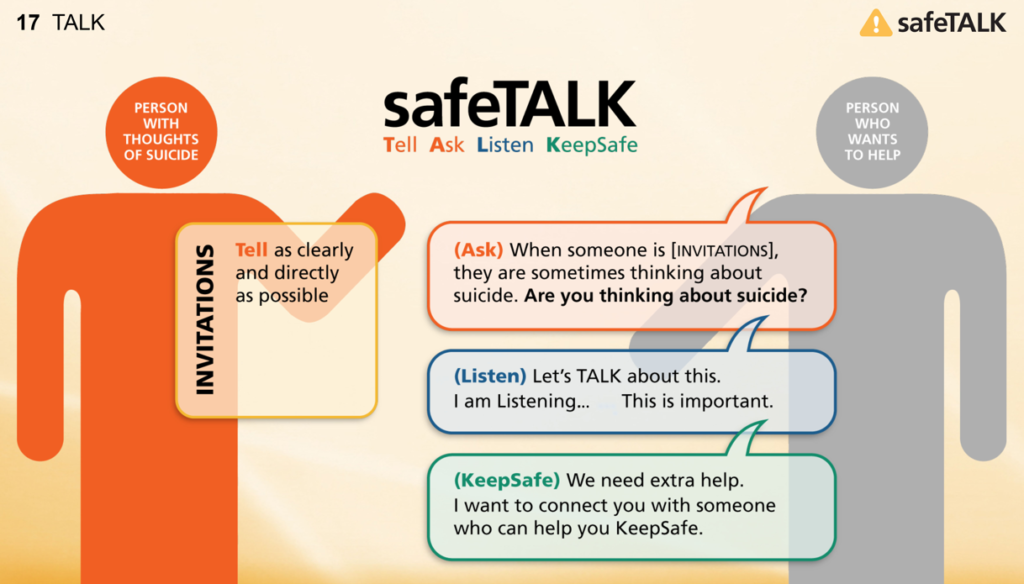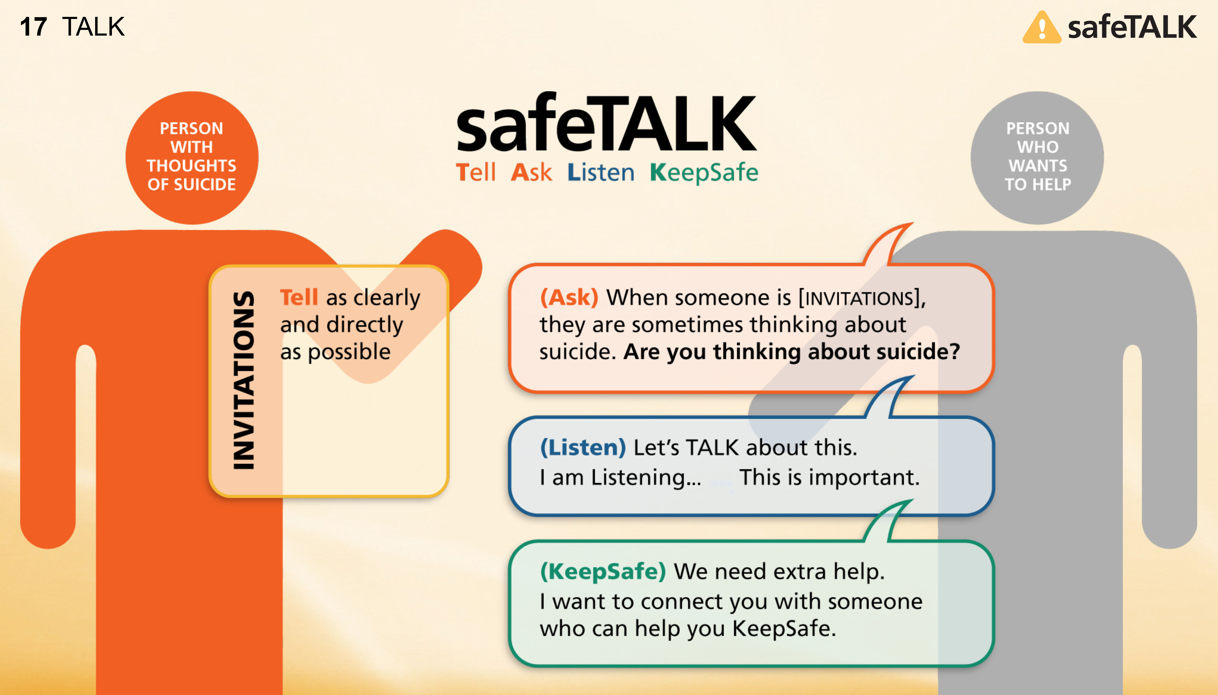A recent SafeTALK training in Clearbrook, led by Monica McConkey, outlined the basic steps anyone can use to recognize the signs to help prevent suicide.
Monica is hosting a series of safeTALK trainings this winter throughout the Northwest Minnesota region to equip our communities’ residents with skills to help save a life. The idea is that anyone, once aware of the signs, can play a role in connecting someone to professional help.
Anyone can be trained to recognize the signs and reach out to a person in crisis. Participants are trained to be “Suicide Prevention Helpers” and are not expected to solve a problem or “fix” anyone”. Rather, they are there to listen, determine risk, and connect that person to resources. Suicide is preventable.
Monica holds one of two legislatively funded positions focused on spreading suicide awareness in rural agricultural areas. With suicide rates being 2 to 3 ½ times greater than the national average in rural areas, safeTALK equips attendees to know how to respond, react, and help, with the goal of preventing suicide.
The training focuses on recognizing the signs exhibited by a suicidal person looking for help, determining if the person is in fact talking about suicide, and creating a safe bridge for that person until further help can be reached.
Using examples and role-playing, attendees are taught to act as a connector between the person in crisis and mental health professionals. This is done by following the steps outlined as TALK (safeTALK):

T is for Tell. The person who is contemplating suicide “tells” those around them in some way.
A is for Ask. Be direct. Take the stigma out of suicide and ask, “Are you thinking about suicide?”
L is for Listen. Often simply being heard is an important intervention for those thinking about suicide. I am listening. This is important.
K is for KeepSafe. It is important to create a safe place for the person who is having thoughts of suicide until additional help can arrive.
People living in rural areas experience several factors that decrease the chance of getting help when they need it. Isolation, reduced access to mental health services, jobs or careers that are solitary in nature, and an increased stigma associated with suicide is common in rural areas.
Monica is clear with her messaging: People contemplating suicide almost always ask for help. SafeTALK trainings help with identifying the signals that indicate thoughts of suicide are present and provides clear direction for the next steps.
Research shows that talking about suicide does not increase the risk of someone committing suicide. It is important to be alert to the signs and take them seriously.
Register for a safeTALK training come to your community! These free safeTALK trainings will equip community members with suicide alertness skills.
Nov. 20: Lancaster: 8:30 a.m. to 12:30 p.m.
Register: https://lancastersafetalk.eventbrite.com
Nov. 21: Crookston, 8:30 a.m. to 12:30 p.m.
Register: https://crookstonsafetalk.eventbrite.com
Dec. 10: Brooks, 8:30 a.m. to 12:30 p.m.
Register: https://brookssafetalk.evenbrite.com



